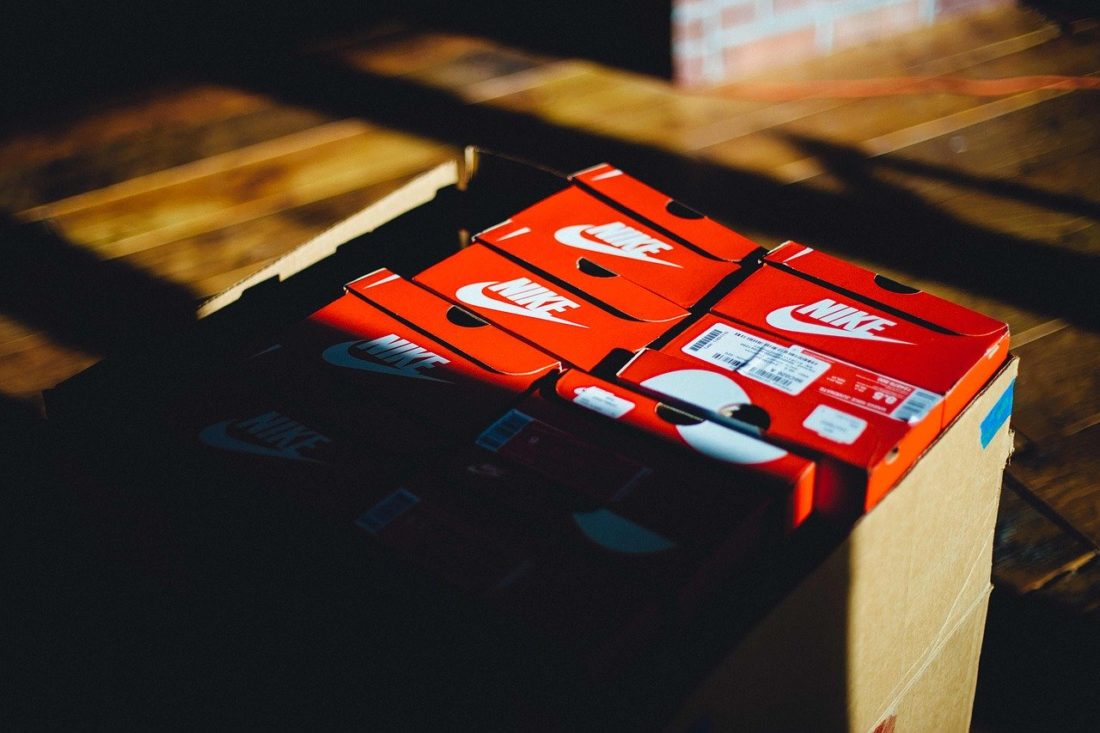It’s been over a year since Nike stopped selling its products on Amazon. And, partially due to Covid-19, direct e-commerce jumped to 30% of the brand’s sales at the end of last year.
This article was updated in July 2021.
In November 2019, Nike, Inc. decided to stop selling its shoes and gear directly through Amazon. Bloomberg broke the news, adding that the decision ends the brand’s two-year pilot program of selling directly with Amazon Retail. It also ushers in a massive overhaul of Nike’s online retail strategy. Nike leaving Amazon is not only monumental; it’s controversial.
“As part of Nike’s focus on elevating consumer experiences through more direct, personal relationships, we have made the decision to complete our current pilot with Amazon Retail,” the company said in a published statement. “We will continue to invest in strong, distinctive partnerships for Nike with other retailers and platforms to seamlessly serve our consumers globally.”
Nike Can Afford to Do It
It might be easy to brush the news of Nike leaving Amazon off as irrelevant. It’s good for Amazon to finally take a hit, right? But don’t tune it out. It’s big news for other big brands who are thinking of boycotting Amazon, but it’s also significant for up-and-coming businesses and Amazon’s consumers (you and me), too.
Selling on Amazon has become something of a necessary evil for consumer brands big and small. Nike has immense power over its consumers and yet they, too, felt the pressure to play in Amazon’s sandbox. The obvious reason is that, well, admit it: We all head to Amazon to do our shopping.
“Amazon accounts for nearly half of all online sales in this country, and for good reason,” observes David Lazarus, business columnist for the Los Angeles Times. “It provides arguably the best e-commerce experience available. And if you’re a Prime member, you’re probably going to make the most of your annual subscription by giving Amazon as much of your business as possible.”
It’s tough for even massive brands like Nike to lure consumers to their specific site to browse for products. If you’re a small, relatively unknown brand? Forget it. It’s impossible to compete. You might as well join the club.
But then there’s the issue lurking in the hidden underbelly of Amazon: counterfeit products.
Do You Know Who Your Seller Is?
When popular brands like Nike boycott Amazon, third-party sellers take their place. Some of these third-party sellers are legitimate resellers, but far too many others sell counterfeit, fake, or cost-inflated products.
According to the Wall Street Journal, Nike’s willingness to sell through Amazon itself didn’t eliminate counterfeit activity. It didn’t even give the brand more control over competing gray-market resellers. The LA Times noted that “third-party sellers whose listings were removed simply popped up under a different name.” Official Nike products had fewer reviews and were listed less prominently.
This issue isn’t just a big brand problem. We’ve talked to small business owners who’ve seen success selling on Amazon, only to have those products then “hijacked” by fraudulent sellers. The practice is more damaging than losing a few sales.
“Not only did others begin selling on my own Amazon product listing and taking my customers,” a Seattle-based small business owner told us, “but they were also not shipping the customers the correct products shown in the picture, which resulted in bad reviews.”
In a study conducted last year, more than one-third of popular products sold on Amazon and sites like it, including Walmart.com and eBay, were found to be counterfeit. Items were all shipped from the U.S., advertised as new and name-brand, and sold by third-party sellers with average customer ratings above 90%.
What more could you ask consumers to consider?
Get Real
It’s troubling news for brands of all sizes and for everyone who purchases products through a major online marketplace. Amazon launched Project Zero, designed for legitimate sellers to remove suspected counterfeits proactively. They’ve also created Brand Registry, which allows those same legitimate sellers to register their logos and intellectual property. This way, Amazon can more easily spot fakes.
At the same time, however, Amazon retail has aggressively grown its footprint. As the Washington Post recently suggested, any efforts to curb suspect sellers can’t possibly keep up. So, until that time, Nike is out. Mostly because they can afford to try other things. Time will tell if the move helps or hurts their online sales and if their loyal fans are savvy enough to find them where they’re hiding without being duped along the way.
